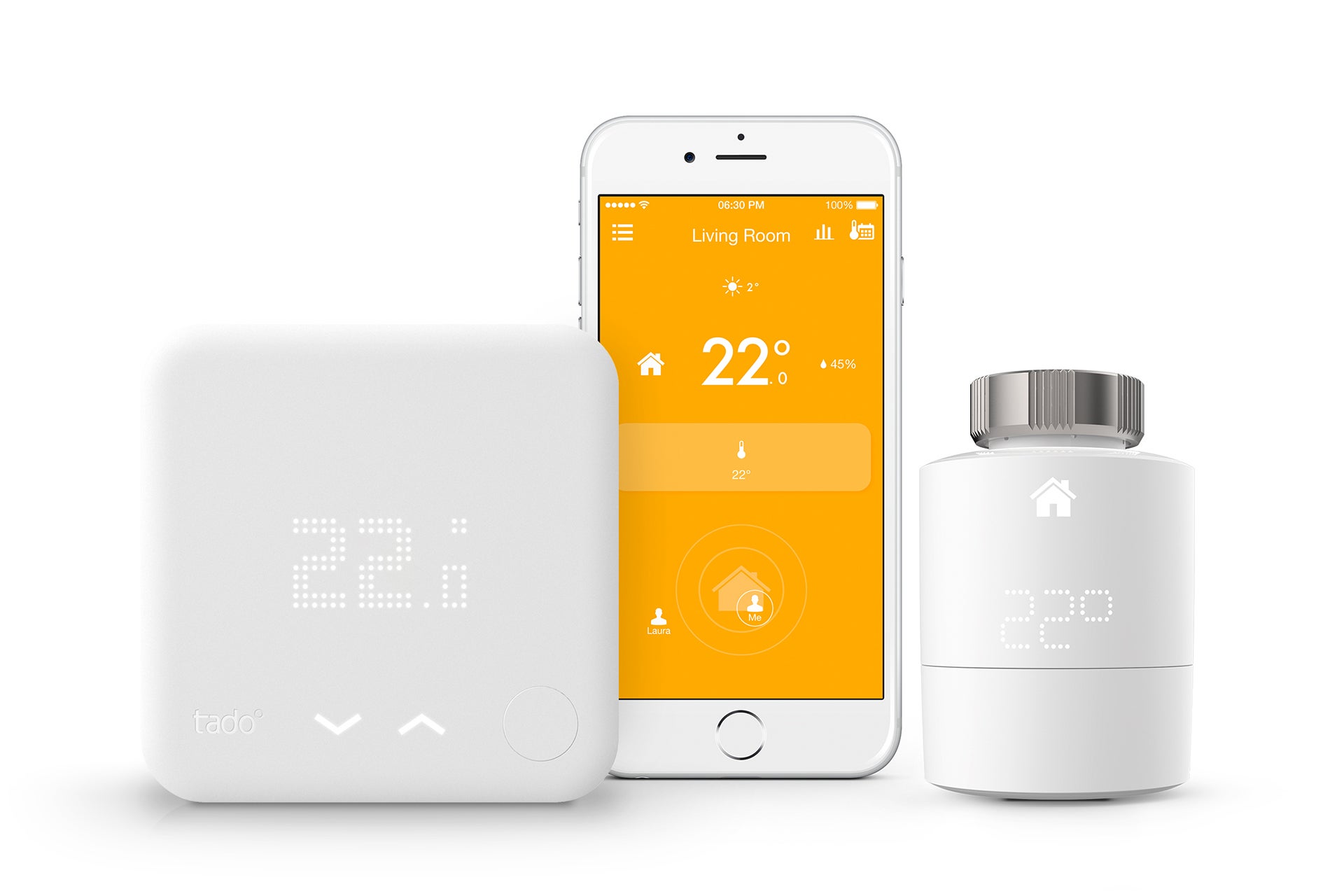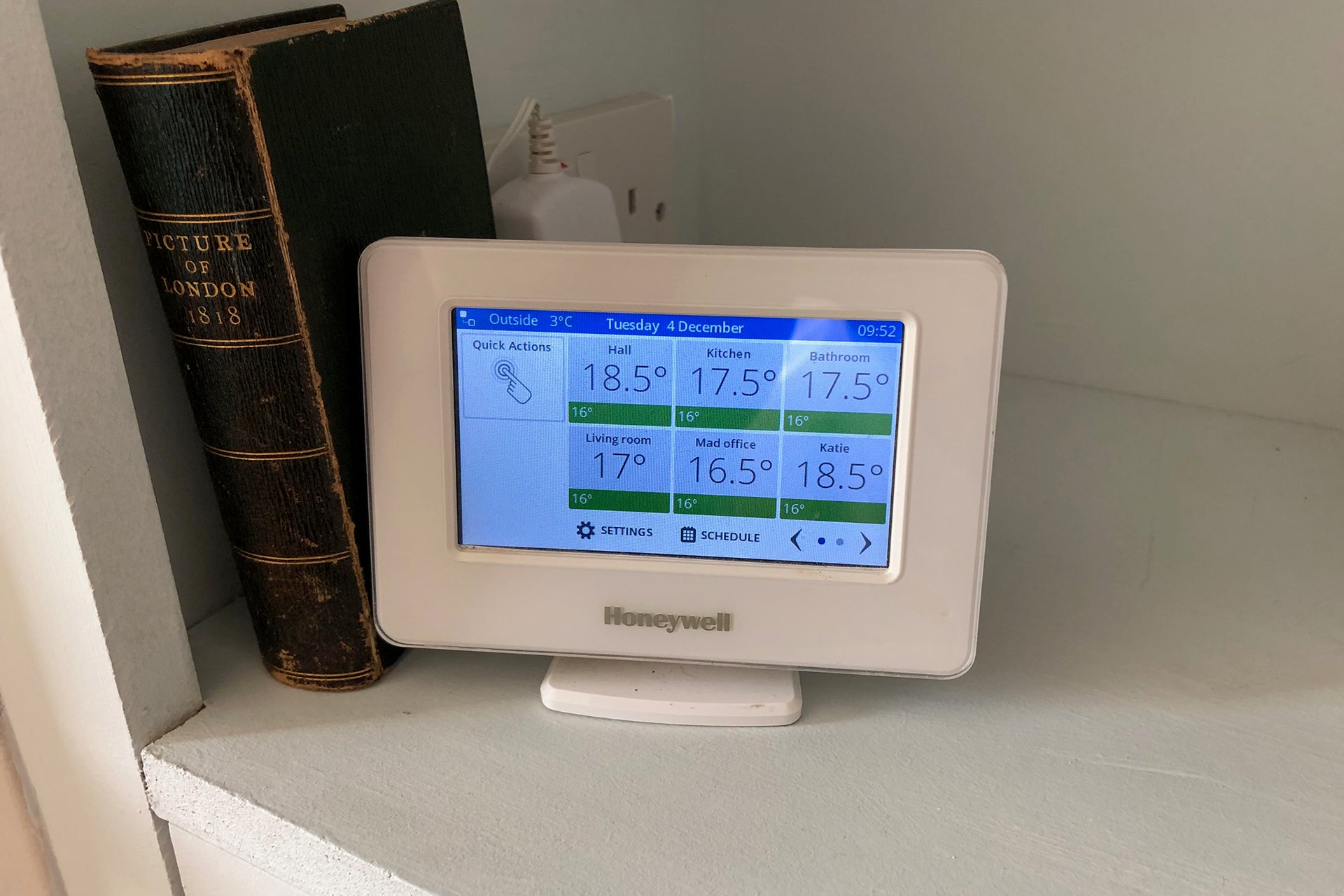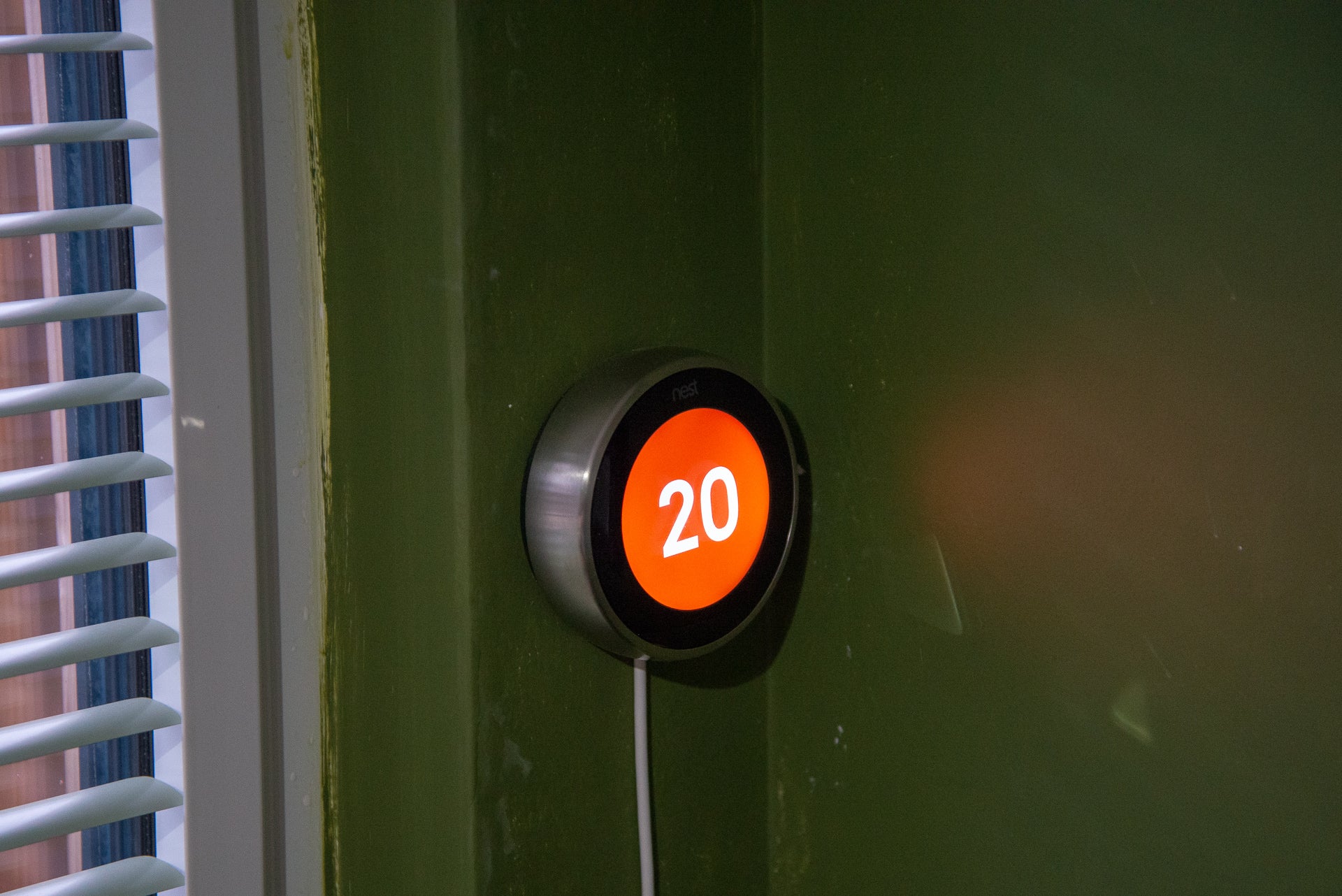Nest Thermostat E Review
A simple way to make your heating smarter
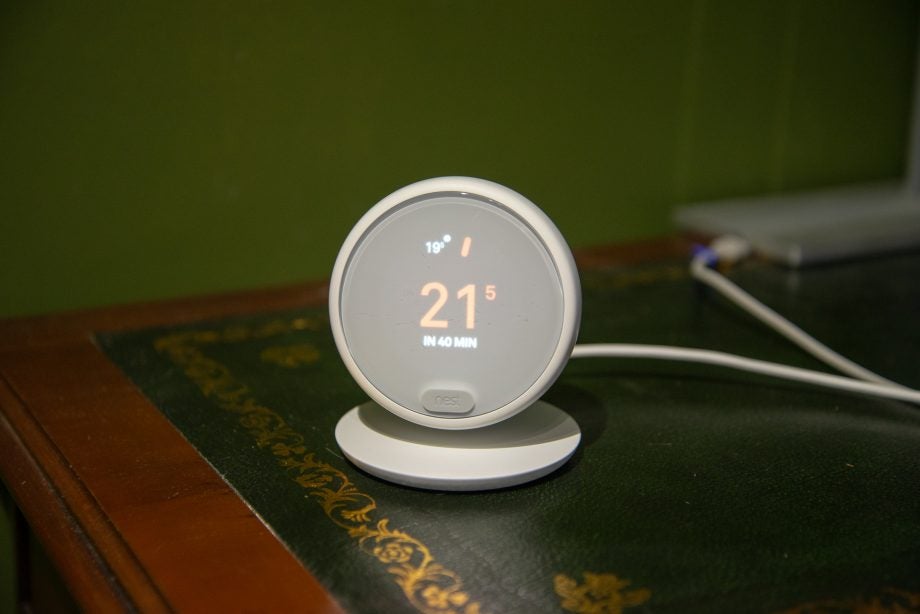

Verdict
A smart-looking, simple-to-install device to control your heating, the Nest Thermostat E is an upgrade to anyone still relying on an old-fashioned wired thermostat.
Pros
- Easy to install
- Diffused screen helps thermostat blend in
- Pre-programmed schedule
Cons
- Assisted install in app can be finicky
- No hot water support
Key Specifications
- Review Price: £199
- Battery-powered Heat Link E
- App and thermostat control
- Geo location and motion sensing
- Android and iOS app support
Smart thermostats can save you money, but the biggest issue is that most require professional installation with a device wired into the boiler. No such requirements with the Nest Thermostat E – this model can be user installed in under an hour in the majority of homes that have an existing wired thermostat.
A new-look plug-in thermostat with far simpler controls next to the existing Nest Learning Thermostat, plus a data-driven pre-programmed schedule means that the heating needs for the majority of owners will be ready out of the box. Note that there’s no hot water support with this model, which may be a deal-breaker for some.
Design and installation
- Battery-powered heat link lets you install this thermostat in minutes
- Clever translucent display looks excellent
Traditional heating systems typically comprise two components. The programmable controls set the times the boiler will fire up the heating; the wired thermostat lets the boiler fire within these times only if the current temperature is lower than the set point.
With the Nest Thermostat E you set your existing controller to be permanently on, but replace the wired thermostat with the battery-powered Heat Link E. The Heat Link E is then controlled via the plug-in thermostat, which turns the heating on and off via temperature (as before) and its own internal schedule.
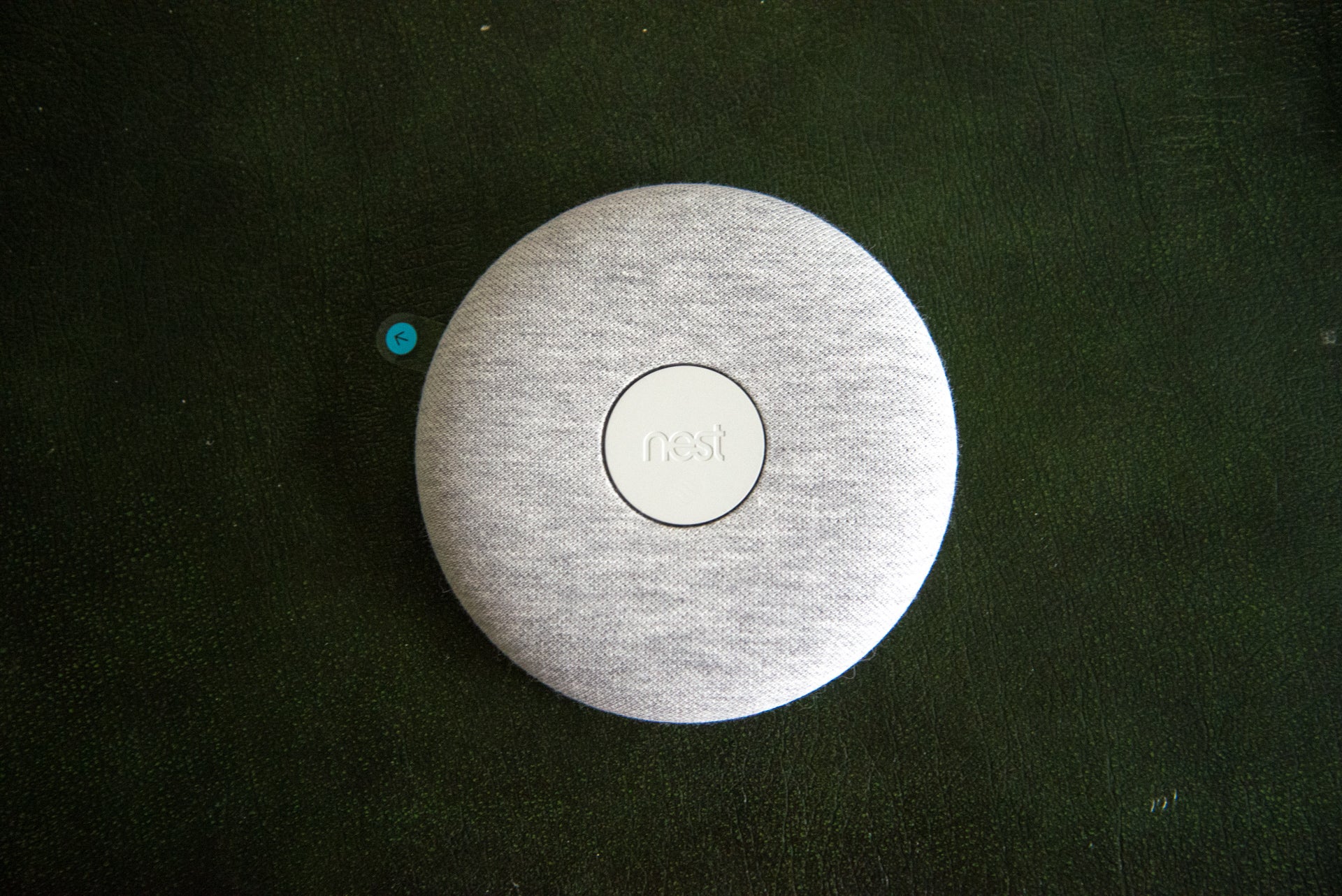
The advantage of this system is that you get to place the thermostat where you want it, with the Heat Link E screwed to the wall where the old thermostat used to fit. The sensible choice is to place the Thermostat E in the most-used room.
Given that the Heat Link E will be on display, Nest has decked it out in a sleek grey material cover. It’s very much along the same lines as the Google Home Mini, which is no surprise given that Google owns Nest.
Installation of the Heat Link E is exceptionally simple. Using the Nest app, which also controls the company’s security cameras including the Nest Hello, Nest Cam IQ Outdoor and Nest Cam IQ, you’re asked a few simple questions about your heating and the number of wires to the thermostat. Your answers help the app show you the right installation method, and where to put the existing wires.
If you pay to have the Heat Link E wired directly into your boiler, you can use the digital OpenTherm interface if supported (see, What is OpenTherm? for more details). However, if you’re going to pay for installation in this way, you’re probably better off looking at the more expensive Nest Learning Thermostat 3rd Gen.
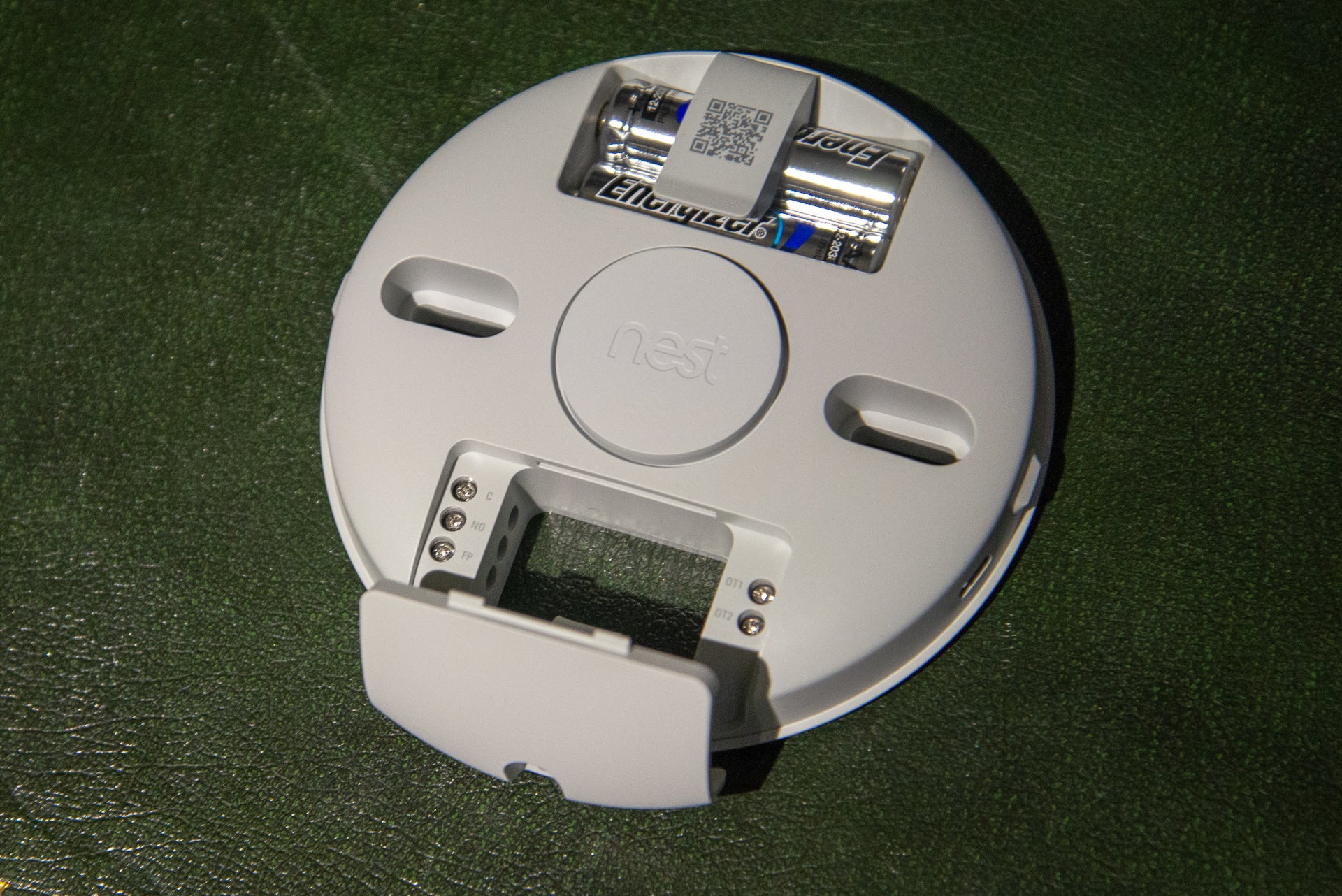
The setup procedure also helps you get the thermostat set up, hooking it up to your Wi-Fi network. If you’ve got existing Nest devices, these can help auto-configure the thermostat.
That’s the theory, but experience has shown that to get this working, you may have to move the thermostat around your home getting it closer to another Nest device. Sadly, there’s no way to override the automatic setup and just pick a Wi-Fi network manually if the auto setup doesn’t work.
The Nest Thermostat E is fixed to a weighty stand; it can’t be wall mounted. Its main display gently diffuses through a white front, giving a softer view than the more techy-looking Nest Thermostat E.
The outside of the thermostat gently rotates, as with the Learning Thermostat, letting you adjust temperature or setting; the weighty stand helps here, keeping the Thermostat E stable as you make adjustments.
Features
- Comes pre-programmed with a schedule and then adapts to your use
- Can easily be manually controlled
- Still no Amazon Alexa support
One of the key differences of the Nest Thermostat E, compared to its competition, is that it comes pre-programmed with a schedule based on data from millions of existing Nest users. The idea was to give a schedule that suits most people so that, out-of-the-box, the Thermostat E is ready to go.
For most people, the schedule is about right. For weekdays, the heat is set to 20ºC from 6:00 then down to 16ºC at 8:30. In the evening, the heat goes to 20ºC at 16:30 and down to 15C at 22:30. At weekends, the temperature is set to 20ºC all day from 7:45 until 22:30, when the set temperature drops to 15ºC.
Beyond that, the Thermostat E starts to learn as you use it, adjusting the schedule based on how you use the thermostat and turn the heating up or down. If you want more drastic changes immediately, then there’s complete control over the schedule both in-app and via the main thermostat. The latter is a bit trickier to use than the app.
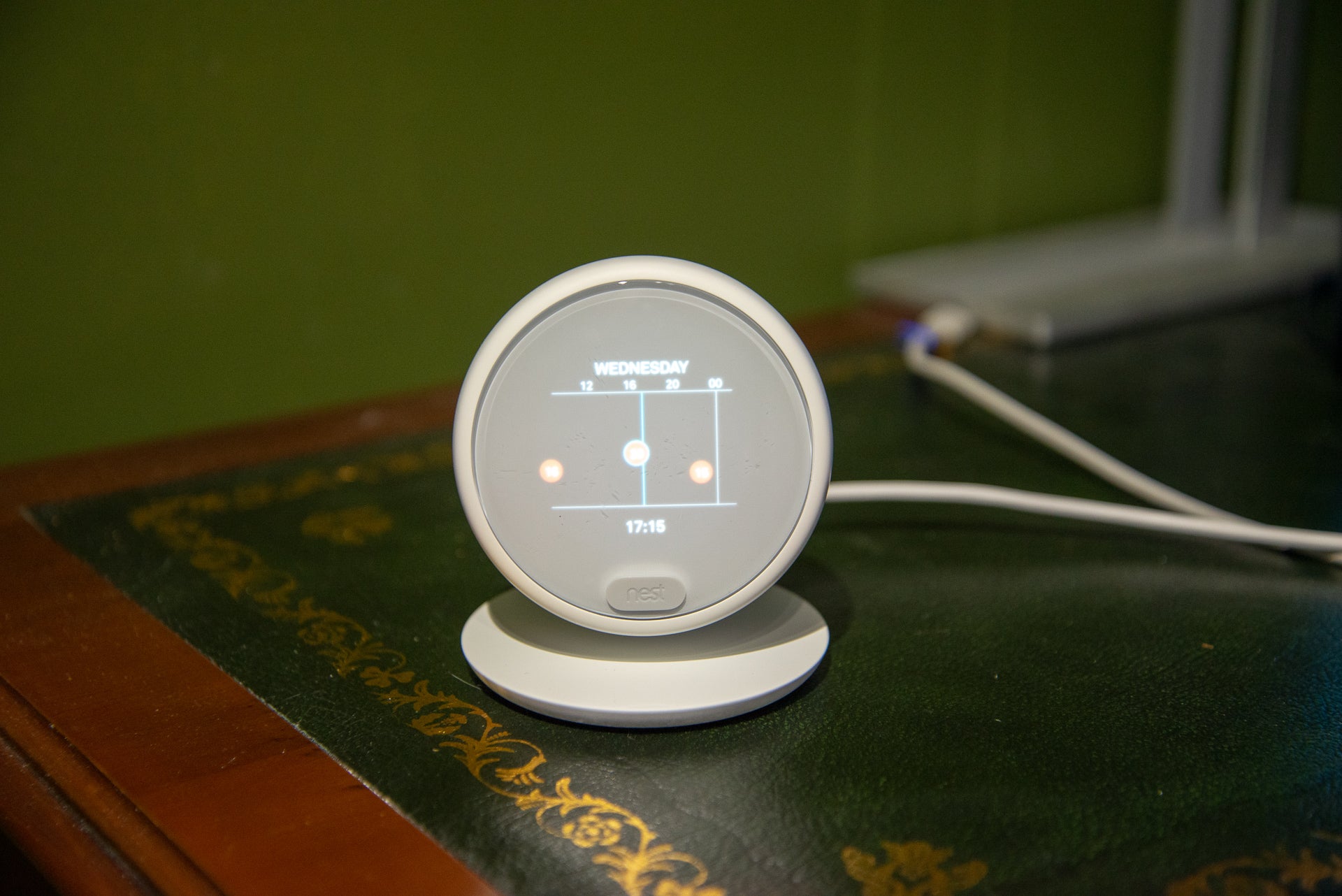
In-app, scheduled points can be dragged up or down to adjust temperature, or left or right to adjust the start/end times. You can add additional schedule points, too, say for a burst of heat mid-day in a kitchen.
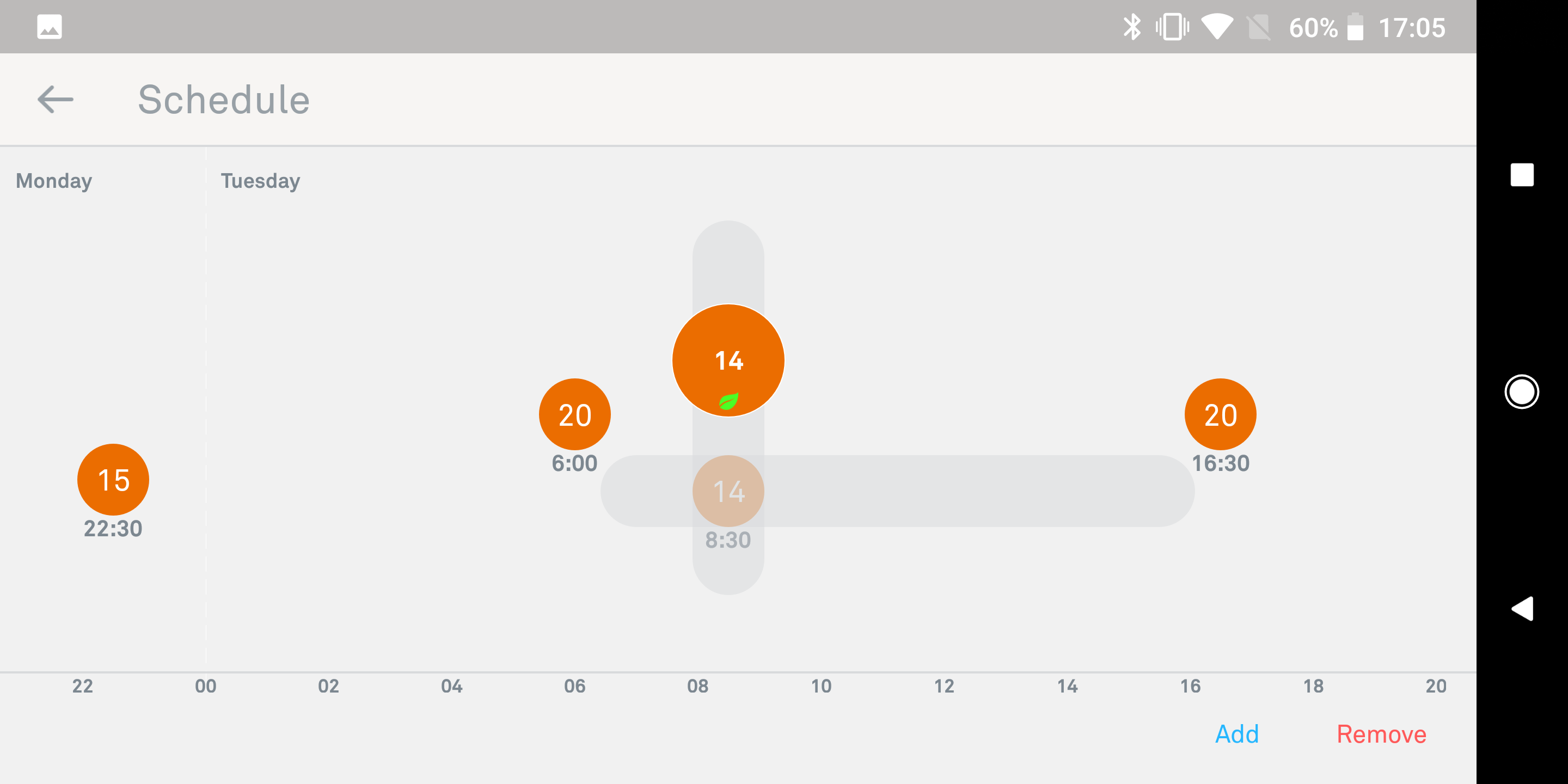
Selecting any energy-efficient temperature shows a green leaf on the display, which is a handy and visual way of helping to monitor your settings.
As with previous Nest products, True Radiant helps prevent temperature overshoot by learning how long your home takes to warm up and then shutting down the boiler earlier. This can save money in the long term, as you run your boiler for less time.
Note that the Thermostat E can distinguish between ambient temperature and direct sunlight, so it won’t be confused by a cold, bright day.
As well as the temperature read-out, the thermostat has a humidity sensor – although that’s just for information; you can’t do anything with it. Likewise, the Heat Link E has a temperature sensor, also just for information.
Home/Away assist uses your phone’s location (and those of family members) to automatically turn the heating to Eco mode when you go out, and back to heat when you return. Nest also uses the motion sensor built into the front of the thermostat to help predict your location, as an added check (and for not turning off the heating for a guest that doesn’t have your Nest app if you go out).
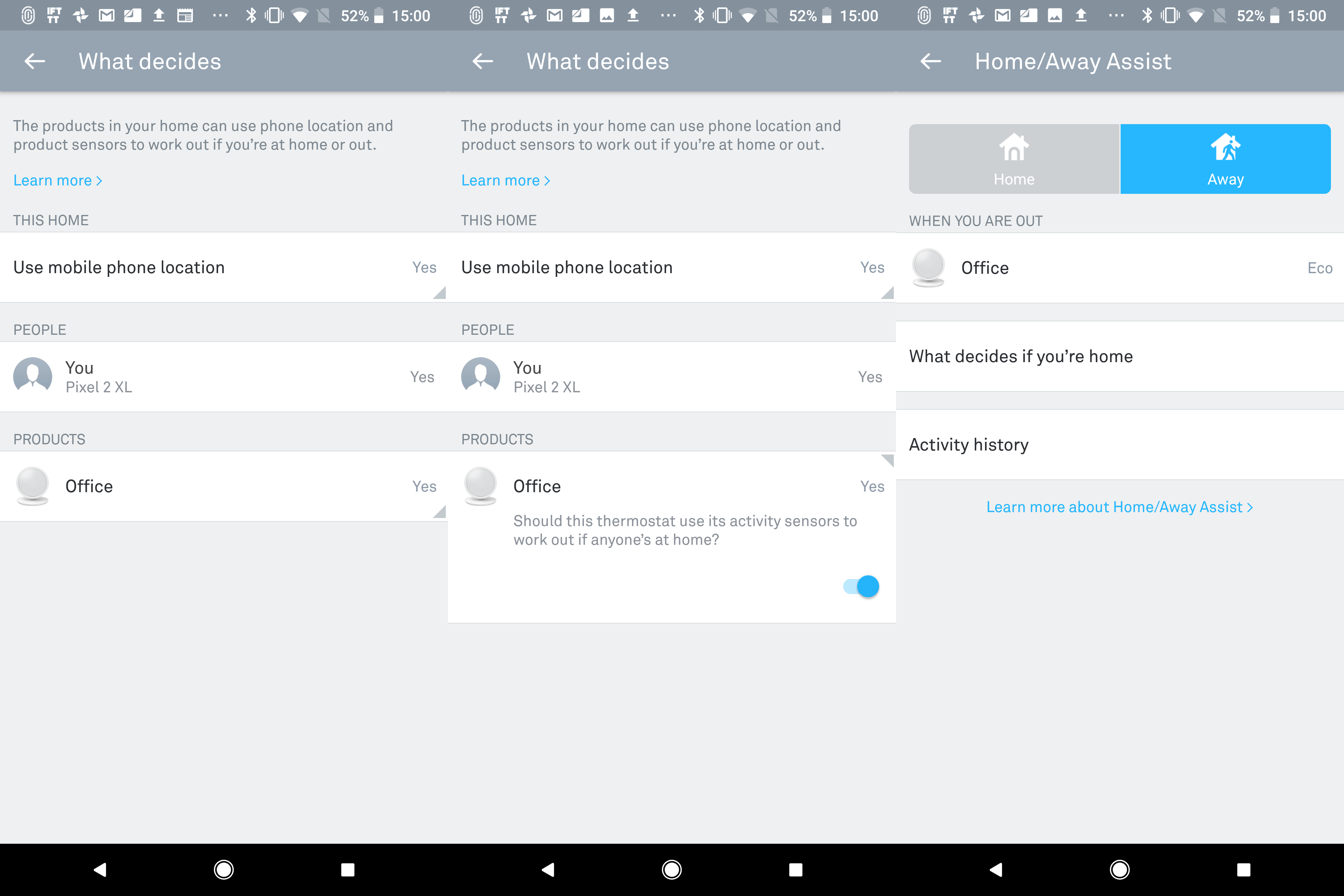
The Google Assistant is supported, giving you voice control over temperature settings, and the thermostat’s mode: you can toggle Eco mode on and off, for example. If you have a Google Home Hub, you can use the on-screen controls to make changes, too. Amazon Alexa support isn’t yet available, which is strange given that the regular Nest Learning Thermostat is.
The standard IFTTT channel also exists. From here you can trigger other devices when the temperature rises to hit a certain point, or when it drops past a set level. And you can also set the thermostat to a set temperature automatically.
Works with Nest is available, as you’d expect, with a clever rule that can turn your heating off if the Nest Protect picks up a carbon monoxide leak.
Performance
- As this is a battery-powered system, changes to temperature take a little longer to be applied
- Clear and simple thermostat to use
As the Heat Link E is battery powered, Nest doesn’t have it constantly listening for the signal to turn on. Dialling the heat up or down manually results in a slight delay before the heating kicks on or off.
With the Nest Learning Thermostat, results are instant, as all parts are mains powered. Does that matter? Not particularly – up to a 30-second delay in operation isn’t enough to make the Thermostat E unresponsive.
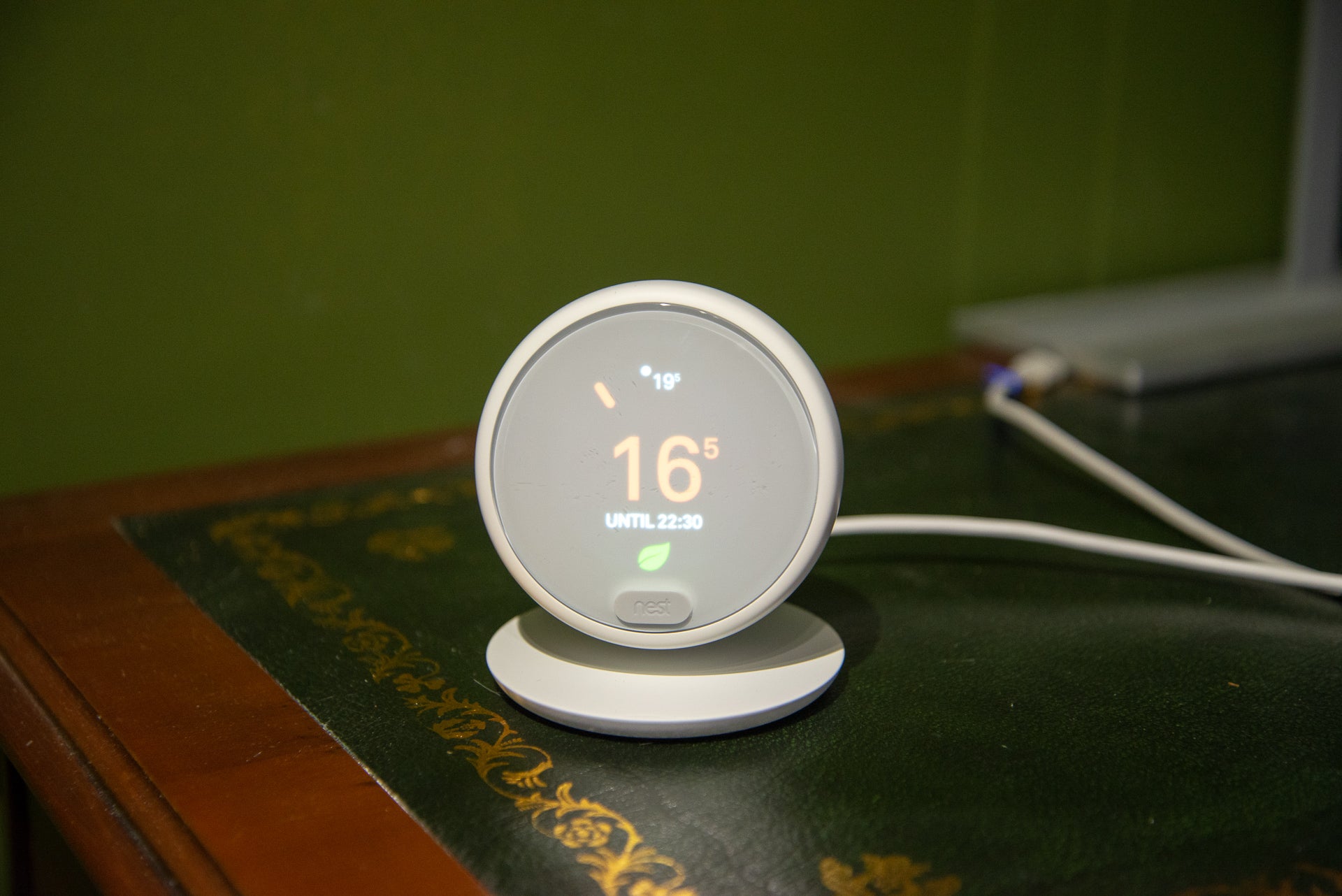
After a week of use, my schedule started to change; the thermostat learned that I was around during the day and naturally wanted the room warmer.
The temperature sensor in the Thermostat E lined up pretty well with an external temperature probe and the measurements were within 1ºC of each other. It’s important to remember that with any device, the temperature in different parts of the room and house can vary massively.
I continue to like the display, which shows you how long until the set temperature will be reached. This improves in accuracy the longer you have the thermostat installed.
You should buy it if…
- You want a simple upgrade
Pop off your old wired thermostat, attach the battery-powered unit and you’re good to go in a few minutes.
- You want simplicity
Thanks to the pre-programmed schedule and learning facility, you shouldn’t have to worry about programming your heating system.
You should not buy it if…
- You want more features
This is a basic smart thermostat, and you get a wider range of options elsewhere. This model also doesn’t support OpenTherm, so you won’t get the best savings.
- You want Alexa control
Although there’s Google Assistant control, Amazon Alexa still isn’t supported.
FAQs
No, it works with the Google Assistant only
No, it comes with a table mount only.
Yes, press the button on the front of the Heatlink to turn on your heating.

